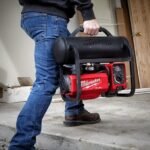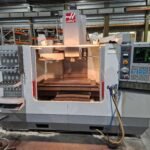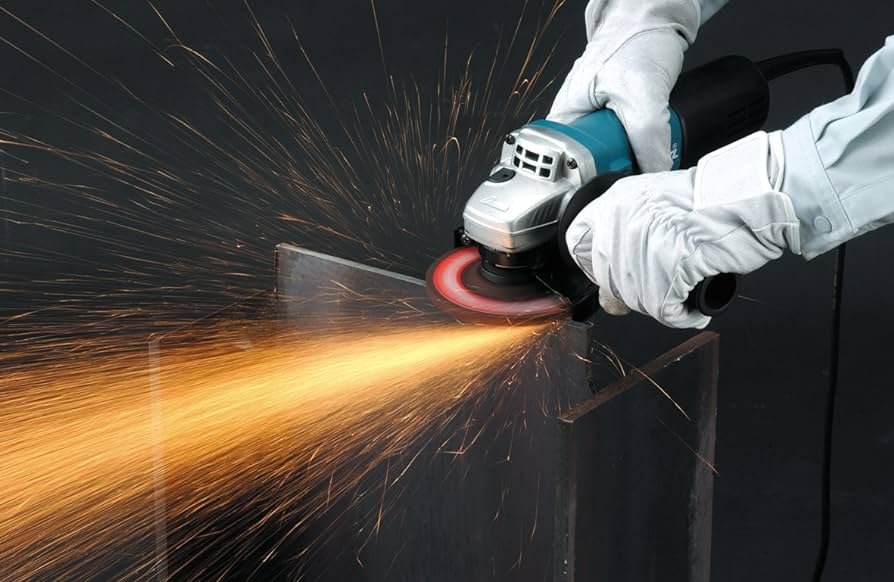One of the key benefits of using a bench sander is its ability to quickly and efficiently remove material from wood. This is especially useful when working with rough or uneven surfaces, as the sander can easily smooth them out. The power and speed of a bench sander allow for precise control over the amount of material being removed, resulting in a more consistent and even finish.
In addition to its material removal capabilities, a bench sander also excels at shaping wood. With the right attachments and accessories, you can easily create curves, bevels, and other intricate designs on your wooden pieces. This opens up a world of possibilities for creativity and customization, allowing you to bring your woodworking projects to life.
Another advantage of using a bench sander is the time and effort it saves compared to manual sanding. Hand sanding can be a tedious and time-consuming process, requiring a significant amount of physical exertion. A bench sander, on the other hand, does the hard work for you, allowing you to complete your projects more efficiently. This is especially beneficial when working on larger pieces or multiple items at once.
Furthermore, a bench sander ensures a professional finish on your woodworking projects. The consistent and even sanding provided by the machine results in a smooth and polished surface, free from any imperfections. This is particularly important when working on furniture or other items that will be on display, as a flawless finish adds to the overall aesthetic appeal.
Lastly, a bench sander offers versatility in terms of the types of materials it can work with. While primarily used for wood, it can also be used on other materials such as metal or plastic, depending on the specific model. This makes it a valuable tool for those who work with a variety of materials or who want to experiment with different projects.
In conclusion, a bench sander is an indispensable tool for any woodworking enthusiast or professional. Its ability to quickly and efficiently remove material, shape wood, save time and effort, ensure a professional finish, and offer versatility make it an essential addition to any workshop. Whether you are a hobbyist or a seasoned woodworker, investing in a bench sander will undoubtedly enhance your woodworking experience and elevate the quality of your projects.
Factors to Consider when Choosing the Best Bench Sander
When looking for the best bench sander, there are several factors to consider to ensure you make the right choice for your needs:
1. Power and Motor Size
The power and motor size of a bench sander determine its performance and capability. A more powerful motor will allow you to work on larger, tougher pieces of wood with ease. Look for a bench sander with a motor size that suits the type of projects you will be working on.
2. Belt Size and Speed
The belt size and speed of a bench sander determine its versatility and efficiency. A larger belt size will allow you to work on larger pieces of wood, while variable speed settings will enable you to adjust the speed according to the task at hand. Consider the size of the projects you will be working on and choose a bench sander with a belt size and speed that meets your requirements.
3. Dust Collection System
Woodworking can create a lot of dust, which can be harmful to your health and create a messy workspace. A bench sander with a good dust collection system will help keep your work area clean and reduce the amount of dust in the air. Look for a bench sander with a built-in dust collection system or one that is compatible with a dust collector.
4. Build Quality and Durability
A bench sander is an investment, so it is important to choose one that is built to last. Look for a bench sander made from high-quality materials that can withstand regular use and provide long-lasting performance. Read reviews and consider the reputation of the brand to ensure you choose a bench sander that is durable and reliable.
5. Safety Features
Working with power tools can be dangerous, so it is crucial to choose a bench sander with adequate safety features. Look for features such as a safety switch, adjustable guards, and a clear view of the sanding area. These features will help prevent accidents and ensure your safety while using the bench sander.
Additionally, it is also important to consider the size and weight of the bench sander. If you have limited space in your workshop, a compact and lightweight bench sander might be more suitable. On the other hand, if you will be working on large projects or need a bench sander for professional use, a larger and heavier model may be necessary to provide stability and power.
Another factor to consider is the ease of use and accessibility of the bench sander’s controls. Look for a model that has intuitive controls and is easy to adjust and operate. Some bench sanders also come with additional features such as built-in work lights or tool-free belt changes, which can enhance your overall experience and productivity.
Lastly, it is worth considering the price range of the bench sander. While it is important to invest in a high-quality and durable model, it is also essential to find one that fits within your budget. Compare prices and features of different bench sanders to find the best value for your money.
The Top Bench Sanders on the Market

Now that you know what to look for in a bench sander, let’s explore some of the best bench sanders available in the market:
1. Makita 9403 Belt Sander
The Makita 9403 Belt Sander is widely regarded as one of the best bench sanders on the market. It features a powerful 11-amp motor that delivers fast and efficient sanding. The large belt size of 4 inches by 24 inches allows for versatile sanding applications. The Makita 9403 also has a highly effective dust collection system, keeping your workspace clean and dust-free.
2. WEN 6502T Belt and Disc Sander
The WEN 6502T Belt and Disc Sander is a versatile bench sander that offers both belt and disc sanding options. It features a 4.3-amp motor that provides ample power for sanding various materials. The belt can be easily adjusted from 0 to 90 degrees, allowing for precise sanding angles. The WEN 6502T also has a built-in dust collection system to keep your work area clean.
3. Delta Power Tools 31-481 Benchtop Belt Sander
The Delta Power Tools 31-481 Benchtop Belt Sander is a heavy-duty bench sander that is perfect for professional woodworking projects. It features a powerful 1.5 HP motor that can handle even the toughest sanding tasks. The large belt size of 6 inches by 48 inches provides ample sanding area. The Delta Power Tools 31-481 also has a durable construction and a reliable dust collection system.
4. JET J-4002 Bench Belt and Disc Sander
The JET J-4002 Bench Belt and Disc Sander is a versatile and powerful bench sander that offers both belt and disc sanding options. It features a 1/3 HP motor that delivers reliable performance. The belt can be easily adjusted from 0 to 90 degrees, allowing for precise sanding angles. The JET J-4002 also has a sturdy construction and an efficient dust collection system.
5. POWERTEC BD1500 Belt Disc Sander
The POWERTEC BD1500 Belt Disc Sander is a compact and affordable bench sander that is perfect for DIY enthusiasts. It features a 1/3 HP motor that provides sufficient power for sanding small to medium-sized projects. The belt can be easily adjusted from 0 to 90 degrees, allowing for versatile sanding options. The POWERTEC BD1500 also has a built-in dust port for effective dust collection.
When choosing a bench sander, it is important to consider your specific needs and requirements. The Makita 9403 Belt Sander, for example, is ideal for those who require a powerful and efficient sander for various applications. Its large belt size allows for versatile sanding, while the highly effective dust collection system ensures a clean and dust-free workspace.
On the other hand, the WEN 6502T Belt and Disc Sander offers the convenience of both belt and disc sanding options. This versatility makes it suitable for a wide range of projects and materials. The adjustable belt angle allows for precise sanding angles, while the built-in dust collection system keeps your work area tidy.
For professional woodworking projects, the Delta Power Tools 31-481 Benchtop Belt Sander is the top choice. With its powerful 1.5 HP motor and large belt size, it can handle even the toughest sanding tasks. The durable construction ensures longevity, while the reliable dust collection system keeps your workspace clean and free of debris.
If you’re looking for a versatile and powerful bench sander on a budget, the JET J-4002 Bench Belt and Disc Sander is a great option. Its 1/3 HP motor delivers reliable performance, and the adjustable belt angle allows for precise sanding. The sturdy construction ensures durability, while the efficient dust collection system maintains a clean work area.
Lastly, the POWERTEC BD1500 Belt Disc Sander is perfect for DIY enthusiasts. Its compact size and affordable price make it a popular choice for small to medium-sized projects. The adjustable belt angle provides versatility, and the built-in dust port ensures effective dust collection.
In conclusion, when choosing a bench sander, it is important to consider factors such as power, versatility, dust collection, and budget. The top bench sanders on the market, including the Makita 9403, WEN 6502T, Delta Power Tools 31-481, JET J-4002, and POWERTEC BD1500, offer a range of features and options to suit different needs and preferences.
Whether you’re a professional woodworker or a DIY enthusiast, there is a bench sander out there that will meet your requirements and help you achieve excellent sanding results.
Use a Dust Collection System
In addition to wearing a dust mask, it is important to use a dust collection system when using a bench sander. This will help to minimize the amount of dust and debris that is released into the air, keeping your work area clean and reducing the risk of respiratory issues.
Check the Sandpaper Regularly
Inspect the sandpaper on your bench sander regularly to ensure that it is in good condition. If the sandpaper is worn or damaged, replace it before continuing with your project. Using worn-out sandpaper can result in poor sanding performance and may even damage the wood.
Secure Your Workpiece
Before starting the sanding process, make sure that your workpiece is securely clamped or held in place. This will prevent it from moving or shifting during sanding, ensuring a more consistent and accurate result.
Avoid Excessive Heat
Be mindful of the heat generated by the bench sander during use. Excessive heat can cause the wood to burn or warp, resulting in an undesirable finish. If you notice the wood becoming too hot, take a break and allow it to cool down before continuing.
Practice Patience
Sanding can be a time-consuming process, especially when working with larger or more intricate pieces. It is important to practice patience and take your time to achieve the desired result. Rushing the sanding process can lead to mistakes or an uneven finish.
Experiment with Different Techniques
Don’t be afraid to experiment with different sanding techniques to achieve different effects. For example, using a circular motion may result in a smoother finish, while sanding in straight lines can create a more textured look. Take the time to practice and find the technique that works best for your project.
Properly Store Your Bench Sander
After you have finished using your bench sander, make sure to clean it thoroughly and store it properly. This will help to prolong its lifespan and ensure that it is ready for use the next time you need it. Store it in a dry and dust-free environment, and consider covering it with a protective dust cover.
By following these tips, you can make the most out of your bench sander and achieve professional-quality results in your woodworking projects. Remember to always prioritize safety and take the time to properly maintain your tool for optimal performance.









